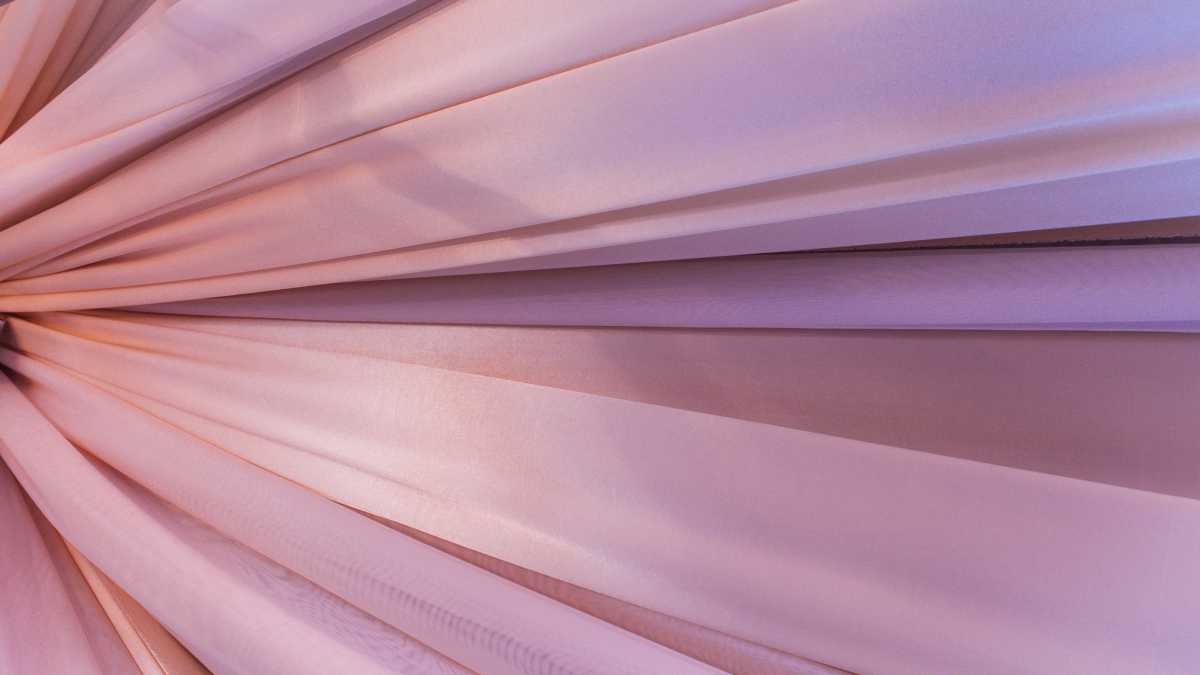Spun polyester fabric is a type of fabric that is made from polyester fibers that have been spun into yarn. This type of fabric is made by extruding the molten polyester through small holes, known as spinnerets, and then spinning the resulting filaments of polyester onto a tube. The resulting yarn is then wound onto a spool and used to weave the fabric.
Spun polyester fabric has a number of advantages over other types of fabrics.
First, it is very strong and durable, making it an ideal choice for clothing that will be worn often or for items that need to withstand a lot of wear and tear.
Second, it is very easy to care for and does not wrinkle easily. Third, it is resistant to mildew and mold, which makes it a good choice for outdoor use.
Finally, it dries quickly and does not shrink when laundered.
Disadvantages of Spun Polyester Fabric
While spun polyester has many advantages, there are also a few disadvantages to consider. First, the fabric can be quite stiff and uncomfortable when used in clothing.
Second, it is not as breathable as some other fabrics and can cause skin irritation in some people. Third, the fabric is not as absorbent as cotton and can cause sweating in hot weather. Finally, the fabric canStatic cling to skin in dry weather conditions.
How Is Spun Polyester Fabric Used ?
Spun polyester fabric is most commonly used in the manufacture of clothing, bedding, upholstery, and drapery. It is also frequently used in the production of tires, hoses,Beltingropes, carpets, and mattresses.
Overall, spun polyester has more advantages than disadvantages when compared to other types of fabrics. It is strong and durable, easy to care for, resistent to mildew and mold, and dries quickly.
However, it can be quite stiff and uncomfortable when used in clothing due to its lack of breathability.
Spun polyester fabric is most commonly used in the manufacture of tires, hoses, ropes,, carpets,,and mattresses but can also be found in clothing,, bedding,, upholstery,,and drapery products..
Advantages of Spun Polyester Fabric
Polyester fibers are strong, durable, and resistant to shrinking, stretching, and wrinkles. These characteristics make spun polyester fabric an ideal choice for a variety of applications, including upholstery, draperies, curtains, tablecloths, bedspreads, slipcovers, and clothing.
Polyester fibers are also hydrophobic, which means they resist water absorption. As a result, this type of fabric dries quickly and does not support the growth of mold or mildew.
Spun polyester fabric is available in a wide range of colors. In addition, it can be printed with a variety of patterns and designs. This makes it an ideal choice for those who want to add personalization to their textile products. Spun polyester fabric is also relatively inexpensive compared to other types of fabrics.
Spun polyester fabric is strong, durable, colorfast, and wrinkle-resistant. In addition, it is easy to care for and relatively inexpensive. These properties make it an ideal choice for a wide range of applications, including upholstery, draperies, clothing, and more.
Due to its many advantageous properties, spun polyester is used in a wide variety of applications. Perhaps the most common use for polyester is in clothing; it is frequently used in the manufacture of shirts, pants, jackets, and other garments.
Polyester is also often used in upholstery; both indoor and outdoor furniture can be made from this fabric. Additionally, spun polyester is commonly used in industrial applications such as making rope, webbing, and tarpaulins.
Spun polyester is an extremely versatile fabric that has a wide range of applications. It is strong and durable, wrinkle-resistant, colorfast, and easy to clean; all qualities that make it an ideal choice for clothing, upholstery, and industrial applications alike.
Quick Overview of Pro’s and Con’s Of Spun Polyester
Pro’s Spun Polyester Fabric
It is durable: Spun polyester is resistant to tearing and stretching, making it ideal for garments that will be worn often or for items that will see a lot of wear and tear, such as upholstery.
It is wrinkle-resistant: Unlike natural fibers like cotton, spun polyester does not wrinkle easily. This makes it ideal for travel clothing or for any situation where you want to look your best without spending a lot of time ironing.
It dries quickly: Spun polyester dries faster than other fabrics, which makes it ideal for activewear or for situations where you might get sweaty or wet (such as at the beach).
The Cons of Spun Polyester Fabric
It can pill: Pilling occurs when small balls of fiber form on the surface of the fabric. This can happen with any type of fabric, but it is more likely to occur with synthetics like polyester. Pilling can be prevented by using a softer detergent and by washing garments inside out.
It retains odors: Because it is non-porous, spun polyester tends to hold on to smells more than other fabrics. This can be an issue if you perspire heavily or if you live in a humid climate. Washing garment regularly will help to keep them smelling fresh.
If you notice that your garments are starting to smell even after washing them, you can try hanging them outside in the sun to air them out.
Polyester is not biodegradable: Once it has been produced, polyester will remain in the environment indefinitely. This means that it adds to the growing problem of textile waste. One way to reduce your impact on the environment is to choose garments made from recycled polyester or other sustainable materials.
Spun polyester is a durable and inexpensive fabric that is popular for a variety of applications. However, there are some drawbacks to using this fabric, such as pilling and odor retention. You can mitigate these issues by taking special care when laundering your garments and by choosing products made from recycled polyester fibers whenever possible.
